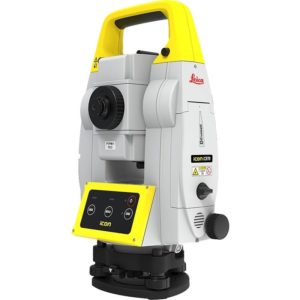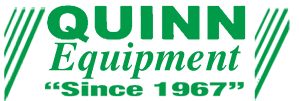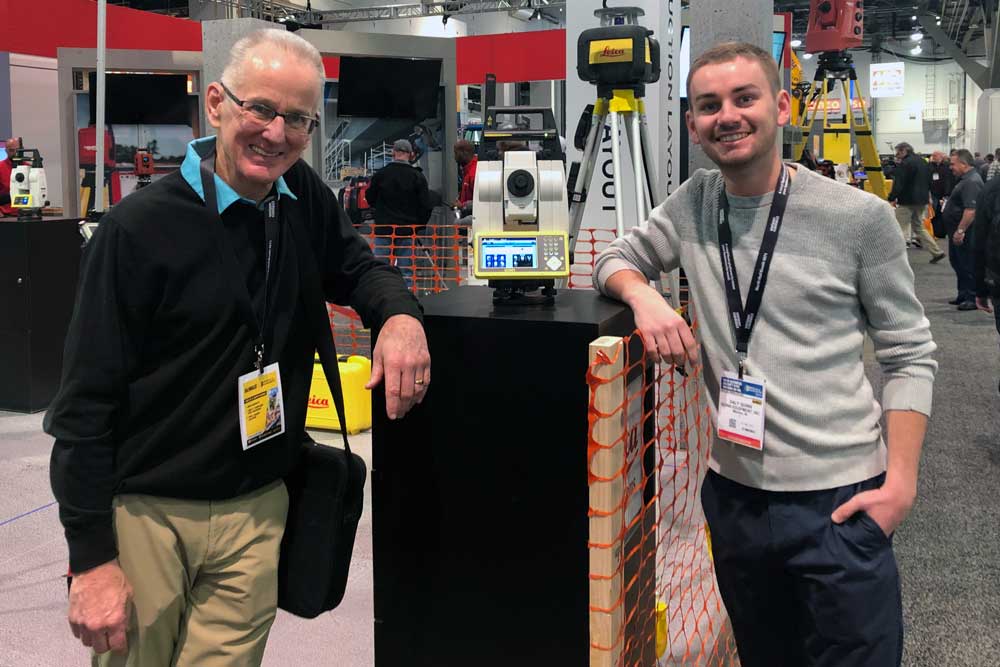Surveying with total station can make your entire job a whole lot easier. That’s why we’ve got so many options available for all our customers interested in them. Get one for your project, so you can speed up your surveyors today.
What Is a Total Station?
Our collection of Leica Total Stations collects data whenever you’re surveying an area. You’re also able to use them to help calculate distances and to create coordinate sets.
Getting one of them for your job site could help you expand your team’s versatility. You’d be able to help other teams whenever they were surveying land. Plus, you could collect data and analyze it while you were on the same trip.
You could even get your station to print coordinates for you to easily locate a job site’s location.
Total stations have been around for a while, and they’ve helped a ton in the construction industry. Let’s take a closer look at what these devices are and how they are able to impact your job. For more information check our Ultimate Buyers Guide to Total Stations.
Useful for Surveying and Construction
The two areas where you’re able to use them the most would be surveying and construction. Both industries require these devices to accomplish some of their basic tasks. Without one of them, you couldn’t even complete jobs according to code in a lot of circumstances.
Use them to mark the locations of walls, floors, and ceilings. You could even design a virtual 3D map that can help you navigate around the job site. Simply collect all your measurements by using the station’s instruments. After you’ve collected everything, it should automatically start processing all the data.
Collects and Analyzes Data
Data collection and analysis can be done using the same piece of equipment now. You can mark a spot’s coordinates while measuring its length and width. By the time you’re done measuring everything, you’ll already have a working map of the area.
Leica Total Stations combine data collection and processing on the same machine. That’s going to simplify your team’s projects while you’re out in the field. You’ve no longer got to dedicate a team to both. One of them can take care of everything without additional support, thanks to this.
A Surveyor’s Complete Toolkit
Surveyors often have to visit job sites before anyone is able to break ground. They’ve got to measure a site’s characteristics before deciding whether it’s worth pursuing.
A lot of their job requires highly sophisticated mathematics. Doing most of it in your head would be next to impossible. That’s why we’ve got computers in our stations to take care of the numbers for you. You won’t even have to leave the field to see your analysis’s results, giving you a clear view of the future.
How to Use a Total Station
Using a robotic total station isn’t as difficult as you think. Most of the time, you’re able to follow the on-screen instructions while you’re operating it. Operation gets easier the longer you’ve been using the equipment, so you should start soon. The sooner you’re using it, the quicker you’ll become proficient.
Let’s take a look at 4 of the device’s primary functions to see how you’re able to operate them.
Measuring Angles
Measuring angles can help when you’re building something that’s got a triangle in it. To build with triangles successfully, you’ve got to do a lot of angular math. Fortunately, you can use them to handle angular math while you’re in the field collecting data.
Most use a type of electro-optical scanning technology to precisely measure an angle. They are able to compare a spinning glass orb’s barcode to see the angle of an area. Usually, construction-grade stations are accurate to within 5 or 10 arc seconds. That’s more than enough for most applications.
Calculating Distances
Most modern devices use an infrared carrier signal to assist while measuring distances. There is a solid-state emitter placed inside of the device’s optical path, able to make light.
When you’re measuring something, your station reflects light off it. Then, it’s able to measure the modulation of the reflected waves. Their modulation’s characteristics change depending on your distance from the object measured.
Normally, whenever we’re measuring distances, we use multiple frequencies while we’re working. We can use the wave’s displacement to find its speed. We just take its displacement and let it get multiplied by its wavelength to figure out its distance. After we’ve collected waves from its reflection, we can find out the rest of its information.
One of these can be incredibly accurate while it’s measuring distances. It could even measure something up to 1500 m long, within 2 ppm accuracy. That would only be 1.5 mm for a 1500 m measurement.
Coordinate Analysis

A total station can help you map your coordinates while at a job site as you’re measuring its topography.
You could even figure out an unknown location’s coordinates, as long as you’ve got a view of it from the station.
You can use the station as a known observation point. Using that, you can calculate an object’s precise coordinates if you’re able to see it with the station.
Data Processing
Newer models tend to include computer parts and then to help with data processing. These can actually store data inside of the station while you’re still using them.
That can be helpful if you’re working somewhere without a reliable connection. You don’t have to worry about maintaining a consistent connection. Since it backs up all its recordings, you’re never going to lose your work.
Some of them are even able to process data after they’ve finished storing it. Typically, you’ve got to download your data from the station to a computer to create a map of the surveyed area.
However, the newest models can create topographic maps without connecting to a computer. You can navigate their menus to find where they’ve put your topographic maps.
Benefits of Surveying With Total Station
How does using one of these devices help you and your business? They’ve become a staple in the construction and mining industry. A lot of jobs won’t even let you work unless you’ve got one of them on the worksite. Here are a few ways to use a robotic station to help while you’re surveying land and building new property.
Simplify Mining Operations
All miners put themselves at risk when they’re harvesting minerals from the ground. That’s a dangerous occupation, especially if they’re mining deep. Using one of these stations could make the job a whole lot safer when you’re in an unmapped area.
You could create 3D map of the space you are working in to provide everyone with a better sense of direction. Just take measurements of the workspace by using your total stations as normal. After you’ve finished everything, you can look at its data report and see a topographic map.
Make Resource Discovery a Safer Job
Trying to explore for new resources can be one of the most dangerous jobs in the world. Finding valuables isn’t something that can interest be done without paying attention. You’ve got to know where to look, and you’ve got to remain aware of your surroundings. Otherwise, someone or something could get hurt while you’re exploring for new resources.
Creating a topographic map could help you minimize the odds of anything happening. You can use the map to make sure you’re always aware of your location on your resource exploration trips.
Utilize Them While Designing Electrical Schematics
You can use its instruments to help design electrical schematics, even when it’s small. Just because they’re not on the same scale as we are doesn’t mean you’re not able to work on them using this equipment.
You can use the station to design a new electrical circuit, completely up to code. It’s even possible to use them while redesigning a home’s entire electric system.
Apply Them to Weather Tracking for Meteorologists
You can use them while you’re tracking the weather to see where storms have been and to see where they’re heading. Collecting data with one of these could help meteorologists track storms more accurately.
Topographic Mapping
Topographic maps let us know how one area’s surface looks without ever having visited. Back in the day, it took forever to create a topographic map. Now, with the help of one of these stations, you can do it in the afternoon.
Accident Recreation
You can even use a station while you’re on the site of an accident, investigating what happened. You can determine how quickly someone was going when they were hit by looking at their skid marks. From there, it’s not hard to determine an accident’s course of action when you investigate.
What Is Total Stations and Why Work With Us?
These provide an easy way for surveyors to collect data while they’re on the job. Many of them even calculate data after a surveyor has collected it. Quinn Equipment, Inc. has represented manufacturers in the distribution space since the 60s. Contact us today to get the best possible price on a TST, total-station theodolite.
Contacting Our Business and Purchasing Many Products
Once you visit our website or YouTube channel, you can evaluate our cutting-edge products, and you may examine our detailed blog, helpful guidelines, the best total stations, and a description of our company. If you would like to contact our business, you can call 319-320-4982. The representatives could provide a free estimate, answer your questions, describe many types of products, and evaluate your order. Our business offers fast shipping, and after you place an order, you may track the shipment, determine the estimated time of arrival, and receive important updates.



